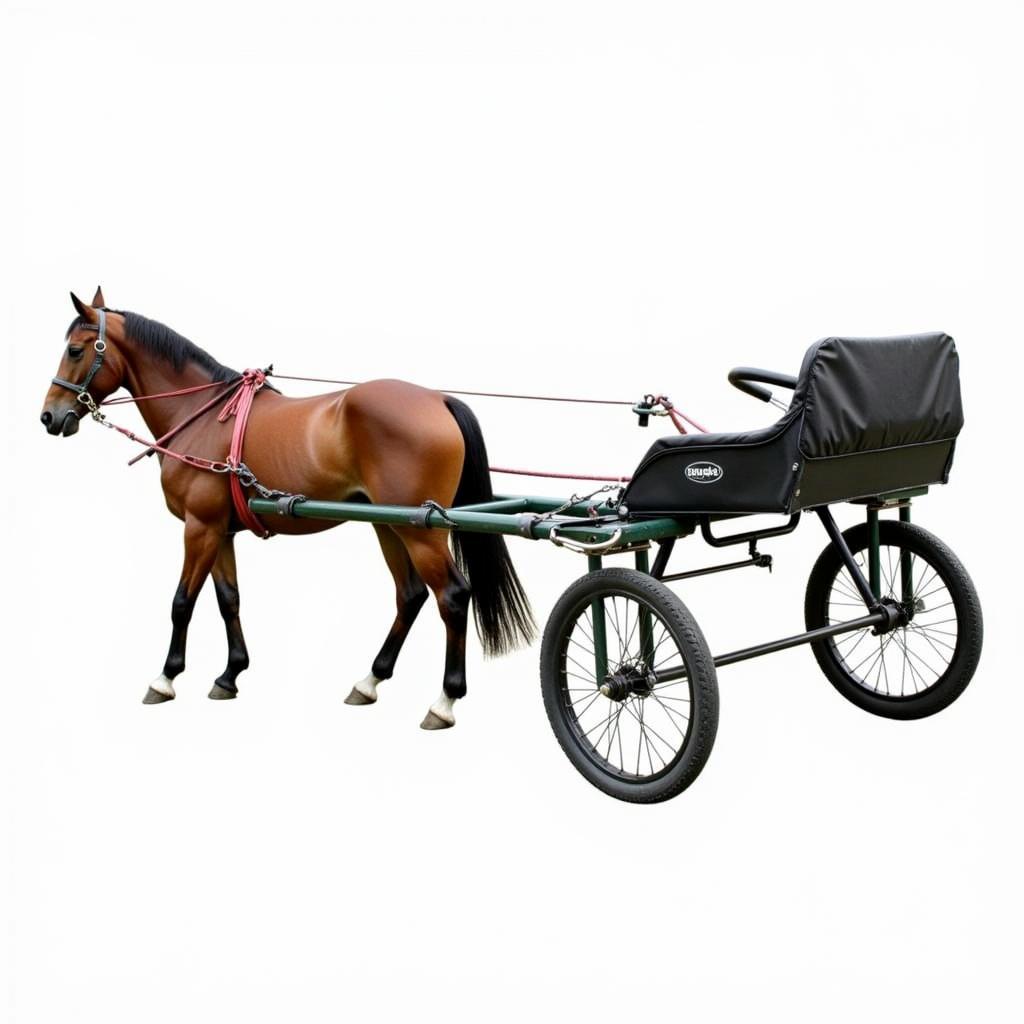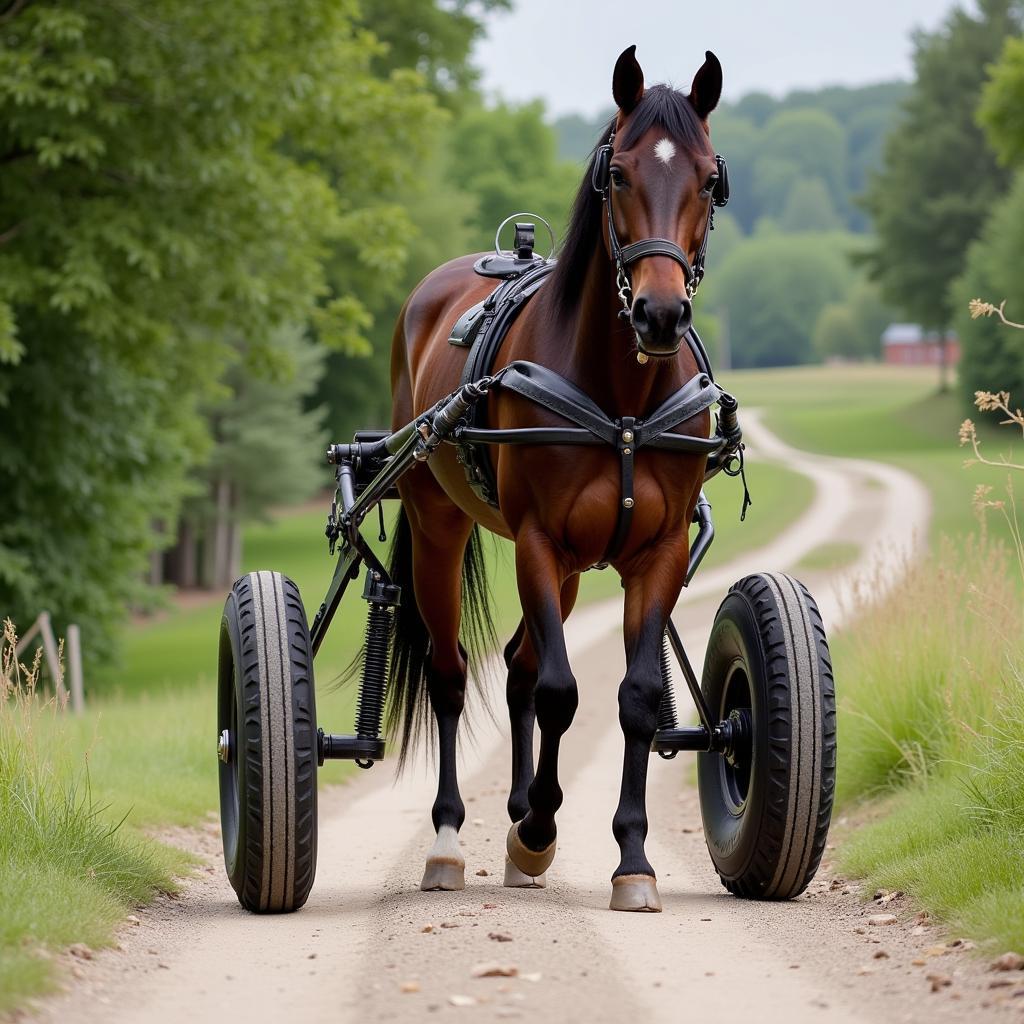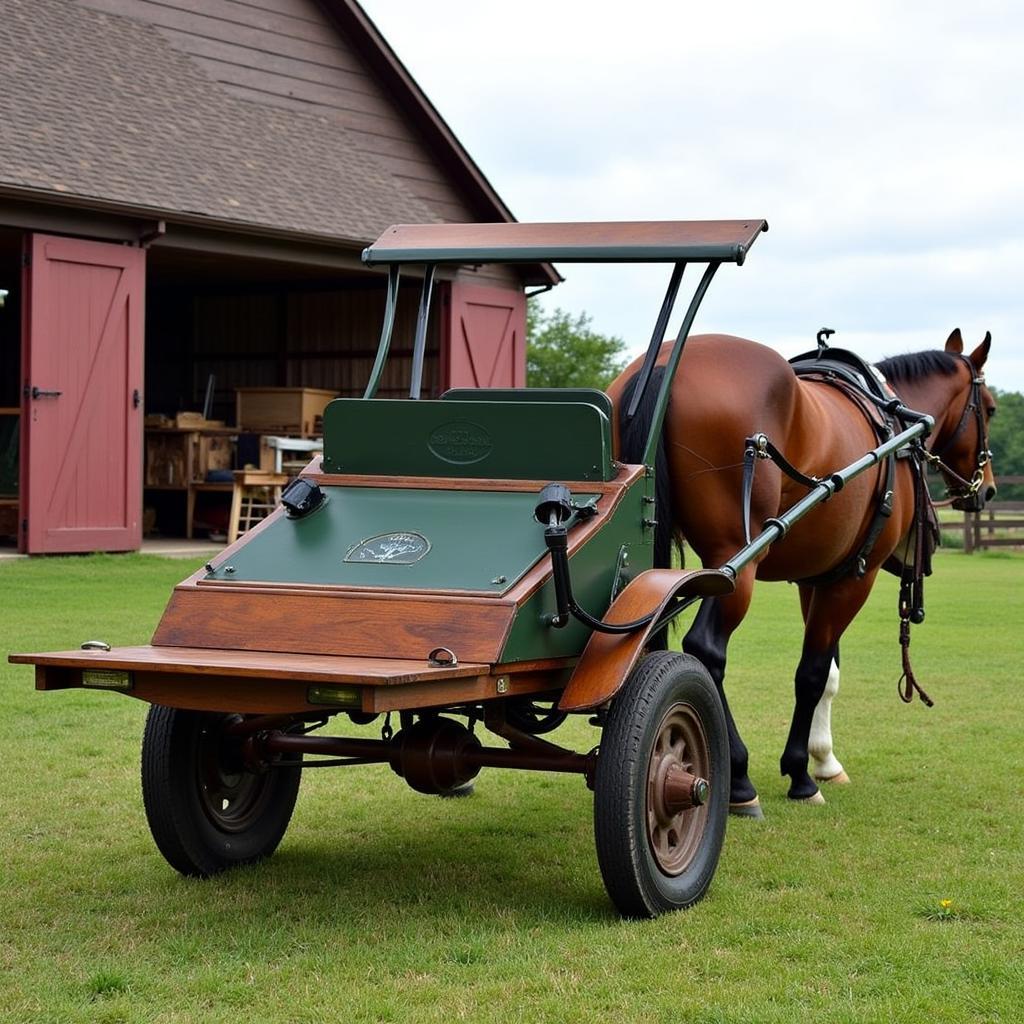Jog Carts For Horses offer a versatile training and exercise solution, beneficial for both horse and owner. Whether you’re conditioning a performance horse, rehabilitating an injury, or simply enjoying a leisurely drive, choosing the right jog cart is crucial. This guide will explore everything you need to know about jog carts, from their various types and uses to selecting the perfect one for your equine companion.
Types of Jog Carts for Horses
Jog carts come in various styles, each designed with specific features and purposes. Understanding these differences can help you make an informed decision.
Standard Jog Carts
These carts are the most common type, featuring a simple, lightweight design. They are ideal for light training, pleasure driving, and exercising horses on relatively flat terrain. Standard jog carts typically have bicycle-style wheels and are easily maneuverable.
Pneumatic Jog Carts
Pneumatic jog carts offer enhanced cushioning and shock absorption thanks to their air-filled tires. This makes them a comfortable choice for horses and riders, particularly on uneven or rougher terrains. They’re excellent for longer drives and provide a smoother ride.
Sized Jog Carts
Sized jog carts are designed to fit horses of different sizes, from miniatures to drafts. Ensuring the correct fit is crucial for both the horse’s comfort and safety. These carts often come with adjustable shafts and other features to accommodate various horse breeds.
 Standard Jog Cart for Horse Training
Standard Jog Cart for Horse Training
Choosing the Right Jog Cart for Your Horse
Selecting the appropriate jog cart involves considering several factors, including your horse’s size and breed, the intended use, and your budget.
Horse Size and Breed
Measure your horse’s height and weight to determine the appropriate cart size. Using a cart that’s too small or too large can cause discomfort and even injury. Consider the breed’s specific needs as well. For example, a draft horse will require a much sturdier cart than a miniature horse.
Intended Use
Consider how you plan to use the jog cart. If you primarily intend to use it for light exercise on flat terrain, a standard jog cart might suffice. However, for more demanding activities or uneven terrain, a pneumatic or specialized cart might be a better investment.
Budget
Jog carts range in price from a few hundred dollars to several thousand. While a higher price doesn’t always guarantee better quality, it often reflects features like durability, advanced suspension, and customization options. Set a realistic budget and prioritize essential features.
 Pneumatic Jog Cart for Rough Terrain
Pneumatic Jog Cart for Rough Terrain
Maintaining Your Jog Cart
Proper maintenance is essential for ensuring the longevity and safety of your jog cart. Regular cleaning, lubrication, and inspections are crucial.
Cleaning
Clean your jog cart after each use, removing dirt, debris, and manure. This prevents corrosion and keeps the cart looking its best. Use a mild detergent and water, avoiding harsh chemicals that could damage the finish.
Lubrication
Lubricate moving parts regularly, such as the wheels, axles, and any other metal components that rub together. This reduces friction and wear, extending the lifespan of your cart.
Inspections
Regularly inspect your jog cart for any signs of damage, including loose bolts, cracks, or worn-out parts. Address any issues promptly to prevent further damage and ensure the safety of your horse.
What are the benefits of using a jog cart?
Using a jog cart offers a low-impact form of exercise for horses, making it ideal for conditioning, rehabilitation, and general fitness. It also allows for controlled workouts, which is beneficial for horses with specific training needs.
Are jog carts suitable for all horses?
While jog carts are beneficial for many horses, they aren’t suitable for all. Horses with certain medical conditions or injuries may not be candidates for jog cart exercise. Consult with your veterinarian to determine if a jog cart is appropriate for your horse.
 Horse and Jog Cart on Farm
Horse and Jog Cart on Farm
Conclusion
Jog carts for horses are valuable tools for training, exercise, and pleasure driving. By understanding the different types available and considering your horse’s individual needs, you can choose the perfect jog cart to enhance your equine partnership. Remember to prioritize safety and proper maintenance to ensure many enjoyable miles together. Choosing the right jog cart contributes significantly to the well-being and performance of your horse.
FAQ
- What is the difference between a jog cart and a training cart? Jog carts are typically lighter and used for exercise, while training carts are often heavier and designed for specific disciplines like harness racing.
- How often should I lubricate my jog cart? Lubricate moving parts at least monthly, or more frequently if used in wet or muddy conditions.
- Can I use a jog cart on paved roads? Yes, but be cautious of traffic and use appropriate safety measures. Pneumatic tires are recommended for paved surfaces.
- What is the weight capacity of a jog cart? Weight capacity varies depending on the cart’s design and construction. Check the manufacturer’s specifications for your specific model.
- How do I train my horse to use a jog cart? Introduce the cart gradually and use positive reinforcement techniques. Consult with an experienced trainer if needed.
- Are there any safety precautions I should take when using a jog cart? Always use appropriate harnessing and ensure the cart is properly fitted. Drive in safe areas away from traffic and be mindful of terrain.
- Where can I buy a jog cart? Jog carts can be purchased from tack shops, online retailers, and directly from manufacturers.
For further assistance, contact us at Phone: 0772127271, Email: [email protected] or visit us at QGM2+WX2, Vị Trung, Vị Thuỷ, Hậu Giang, Vietnam. We have a 24/7 customer service team.